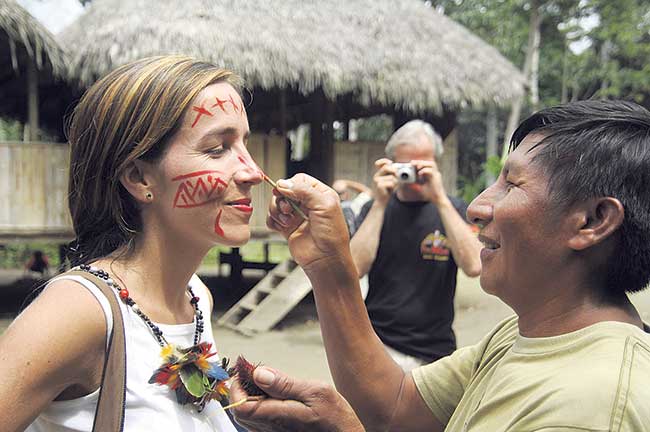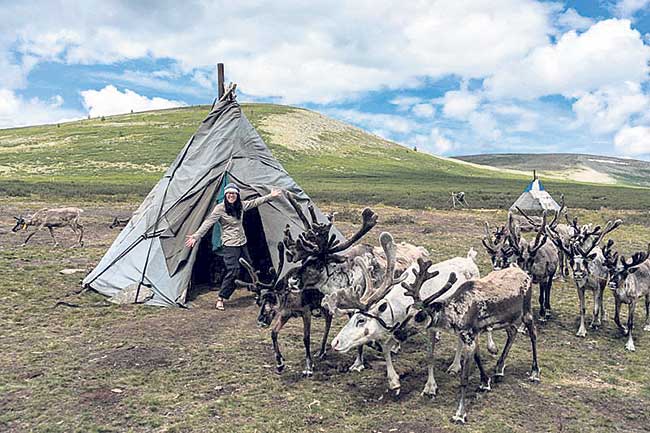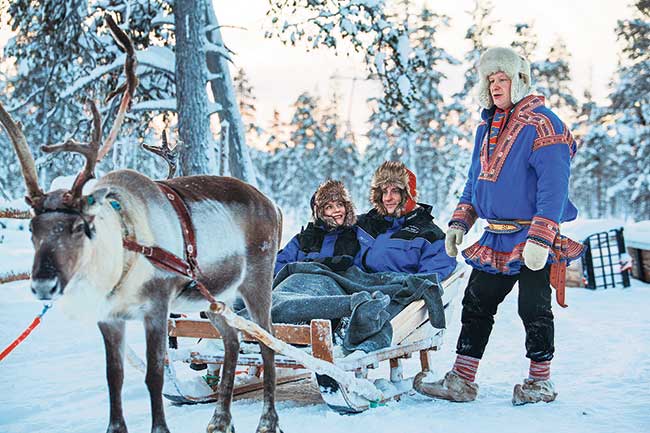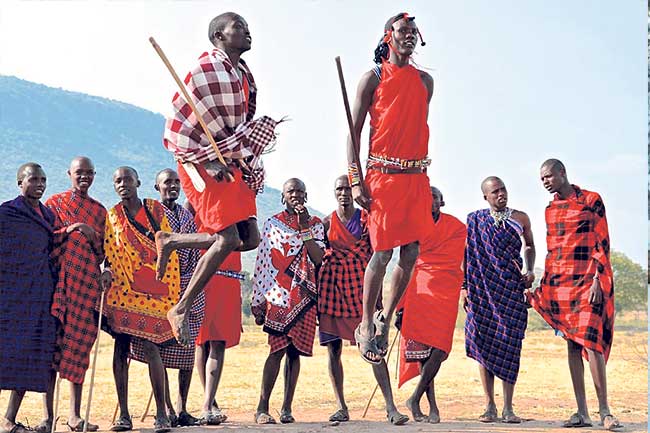We travel to explore. It’s best when adventures can teach us a thing or two about the world as well as ourselves. Each traveler has his or her own ideas about what makes an ideal traveling experience. And, thankfully, the frontier of tourism is always evolving to bring new opportunities.
Now, one rather interesting one is called ethno tourism. Here, tourists are provided access to indigenous people where they can learn more about their cultures. These kinds of trips require you to travel far and wide and deal with logistical challenges that are bound to crop up. However, it can also be an incredibly unique experience.
As an ethno tourist, one needs to do all they can to be respectful to the communities and the tribes. Make learning about new cultures and experiencing unique aspects of life one of the many New Year resolutions you will invariably make. The Week brings to you some destinations famous for ethno tourism to inspire you to do just that.
 Huaoroni tribe, Ecuador
Huaoroni tribe, Ecuador
We are all aware of the great mysteries of the Amazon forest. Trekking through its forest paths itself is bound to be an adventure. After all, the Amazon is said to boast 550 species of tropical birds, 13 primate species, and 1,500 different kinds of trees. But along with the nature and its wildlife, the Amazon is also known to shelter some of the most primitive tribes of our time. What’s more, if you travel to Ecuador you can actually meet one of them.
They are known as the Huaoroni people. 1500 to 3000 people are believed to make up this indigenous tribe. Huaoroni live deep in the rainforests. It’s believed that they have had contact with the outside world for more than 60 years now but still people of the tribe live like their ancestors did thousands of years ago. They still hunt with self made blowpipes, throw spears, dress in bare minimal and heavily rely on the forest for food.
Attires from around the world

Naturally, getting to the tribe’s territory isn’t easy. But if you can canoe (the only accessible means of transportation) up to Huaoroni Eco Lodge, one of Ecuador’s most remote lodges, then you can easily spot and interact with them.
The lodge is said to also host programs where you can learn traditional survival techniques of the Huaoroni people as well as their local dialect. Further, the Huaoroni tribe is currently facing threats to their lifestyle because of encroaching oil explorers. And you can learn more about it from the tribe itself.
 Dukha tribe, Mongolia
Dukha tribe, Mongolia
If you do find yourself traveling through the tall mountains and rugged wilderness of Genghis Khan’s country, you might want to make it a point and try to witness the lifestyle of the Dukha or, as many call them, Mongolia’s last reindeer people. Their lifestyle too is under threat what with reports in 2009 claiming that there were only 52 families in total.
World Travel Guide shares that, over the years, the tiny tour operator, Ethical Landscapes, offers travelers tours to interact with communities from the Dukha tribe. They live deep within the forest, Larch, in northern Mongolia. Getting there will require you to cross at least three mountains and trek for long hours.
But set on the beautiful backdrop of Mongolia’s surreal northern landscape, you shall find the Dukha tribe to be more than worth the effort. They still live in tepees spread across acres of land. As their name suggest, you will also find that they have domesticated reindeers. Indeed, strange as it may sound, these animals have been playing a big part in their lifestyle for centuries. In fact, the Dukha people consider reindeers to be heritages from their ancestors. It is their means of transportation as well as milk production. Tour operators like Ethical Landscapes can actually arrange for homestays with the tribe.
 The Sami people, Sweden
The Sami people, Sweden
They are called the indigenous people of the north. Some 10,000 years old archaeological discoveries along the coast of the Arctic Ocean in northern Norway have been traced to the Sami tribe. Throughout history, they have been known to inhabit the northern portion of Scandinavia, Finland, and eastward over the Russian Kola Peninsula as well as all of present-day Finland.
Centuries of persecution and legal tussles over land nearly drove them from their ancestral land but, these days, they have found a relatively peaceful existence. This has been largely credited to be a respectful yet profitable cultural tourism.
Today, the modern world has found its way into the Sami culture and people from the community don’t live completely traditional lives. However, they do still treasure their traditions. They have their own language, music, literature, and art and their people have managed to keep their interest in all of it alive.
Travelers can easily find themselves a Sami run eco-tourism company that can help them get a hands-on learning experience about this fascinating indigenous culture.
 Maasai tribe, Kenya and Tanzania
Maasai tribe, Kenya and Tanzania
Maasai tribe is arguably one of the most recognized tribes in the world. Their colorful clothes, jewelry, and standards of beauty instantly attract one’s attention. Over the years, there have been numerous documentaries, news pieces, and photo exhibitions about the Maasai and their lifestyles.
However, despite the world’s attention and their own exposure to modern living, the Maasai people have clung on to their traditions. In fact, there was news that both the Tanzanian and Kenyan governments had started programs to encourage the tribe to abandon their semi-nomadic lifestyle, but the Maasai have preserved their customs.
There are comparatively many more agencies that help travelers interact with people from the Maasai tribe in Kenya. Experts, however, ask visitors to choose their guides carefully. Rather than being obnoxious tourists, pointing their camera at the tribes men, women and children, it makes for better experience if you choose guides who were born into the tribes. In these cases, travelers are taken to the village where their guides grew up, thus not crossing any ethical borders.
The tribe believes that to be a Maasai is to be a warrior. So the tribe boasts one of the world’s last great warrior cultures. And visitors are bound to find the rituals and the ceremonies to be fascinating.






































